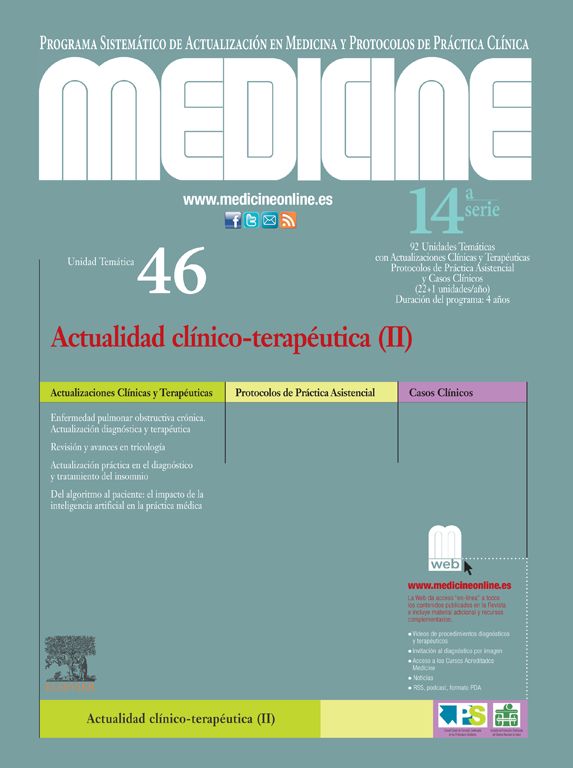La migraña es una cefalea primaria muy discapacitante. La Clasificación Internacional de las Cefaleas en su tercera edición diferencia entre migraña con y sin aura. Además, incluye el concepto de migraña crónica, situación en la que el paciente tiene más de 15 días al mes de dolor, de los cuales al menos la mitad son compatibles con migraña, durante un mínimo de tres meses. El ataque habitualmente cursa con síntomas premonitorios que aparecen desde 48 hasta 2 horas antes del dolor, aura en el 30% de los pacientes (visual, sensitiva o en forma de trastorno del lenguaje), dolor que permanece entre 4 y 72 horas en ausencia de tratamiento o cuando este no es efectivo, y cefalea posdrómica. El dolor típicamente es de inicio hemicraneal, pulsátil, de intensidad moderada-grave y puede asociar náuseas y/o vómitos, fotofobia y sonofobia y se incrementa con la actividad física. El diagnóstico es eminentemente clínico. El tratamiento de la migraña se basa en tres pilares: la educación sanitaria (medidas higiénico-dietéticas), el tratamiento sintomático y la prevención. Como parte del tratamiento sintomático se incluyen fármacos no específicos (antiinflamatorios no esteroideos, antieméticos) y específicos (triptanes, de elección en ataques de elevada intensidad). Por último, la prevención tiene como objetivo reducir el número de días de cefalea y migraña al mes.
Palabras clave
Migraine is a very debilitating primary headache. The third edition of the International Classification of Headache Disorders differentiates between migraine with and without aura. In addition, it includes the concept of chronic migraine, a situation in which a patient has more than 15 days of pain per month, of which at least half are compatible with migraine, for a minimum of three months. The attack usually progresses with premonitory symptoms that appear from 48 to two hours before the pain with aura in 30% of patients (in visual, sensory, or language disorder form), pain that is ongoing for four to 72hours in absence of treatment or when treatment is not effective, and postdrome headache. The pain typically has a hemicranial, pulsing onset of moderate-severe intensity and may be associated with nausea and/or vomiting, photophobia, and phonophobia and increases with physical activity. The diagnosis is eminently clinical. Migraine treatment is based on three pillars: health education (hygienic-dietary measures), treatment of symptoms, and prevention. Non-specific (non-steroidal anti-inflammatory drugs, antiemetics) and specific (triptans, the treatment of choice in highly intense attacks) drugs are included as part of the treatment of symptoms. Lastly, the aim of prevention is to reduce the number of days of headache and migraine per month.
Keywords
Identifíquese
¿Aún no es suscriptor de la revista?
Comprar el acceso al artículo
Comprando el artículo el pdf del mismo podrá ser descargado
Teléfono para incidencias
De lunes a viernes de 9h a 18h (GMT+1) excepto los meses de julio y agosto que será de 9 a 15h




